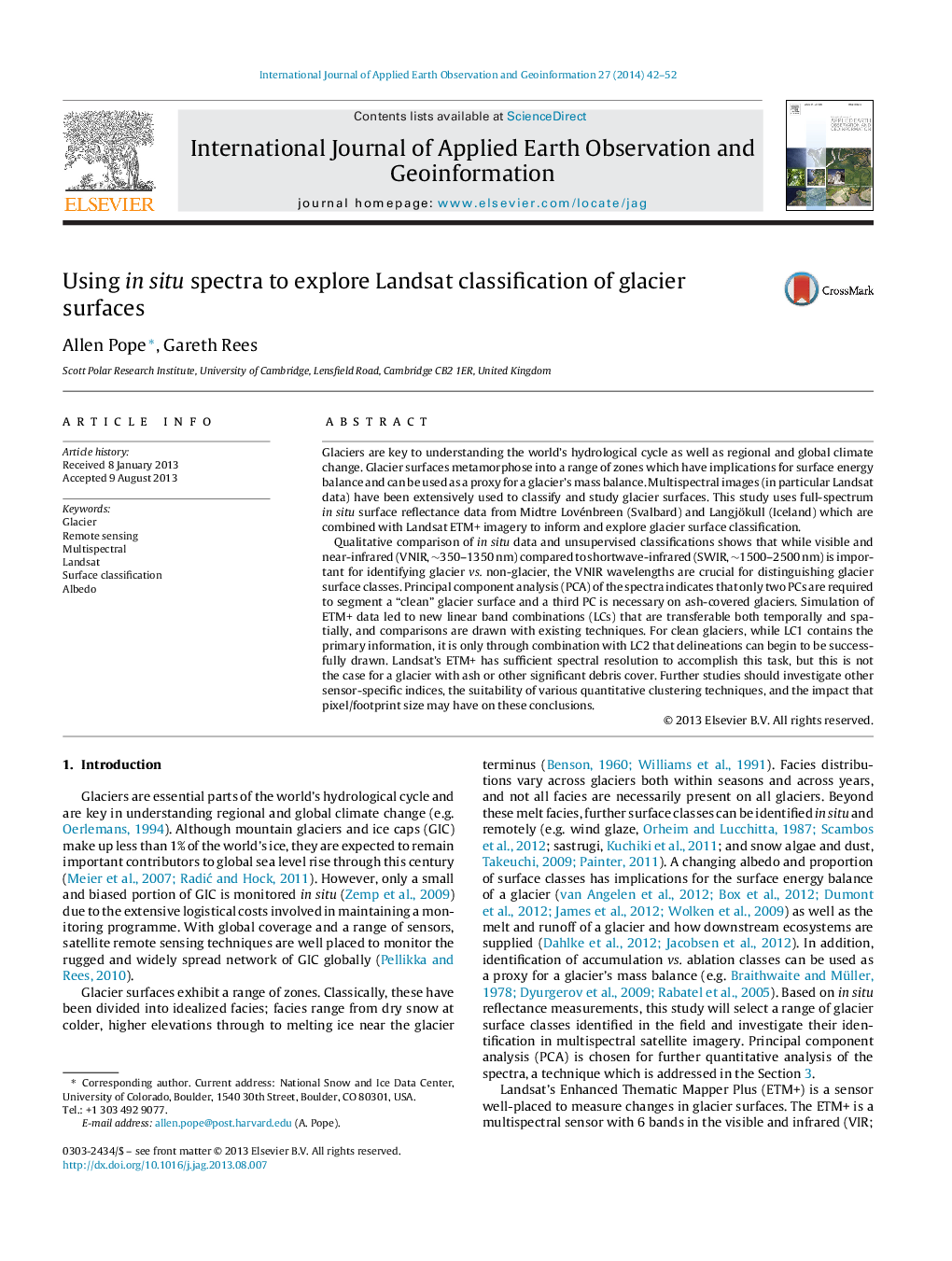| Article ID | Journal | Published Year | Pages | File Type |
|---|---|---|---|---|
| 4464808 | International Journal of Applied Earth Observation and Geoinformation | 2014 | 11 Pages |
•Spectral reflectance was measured (350–2500 nm) for end of melt season Arctic glacier surface types.•Field spectra were compared with archival Landsat ETM+ imagery.•Principal component analysis used to develop transferrable band combinations for classification.•SWIR found important to delineate glacier vs. non-glacier/debris; VNIR for glacier surface classes.•Output classes useable for input into energy balance models or merged for mass balance proxies.
Glaciers are key to understanding the world's hydrological cycle as well as regional and global climate change. Glacier surfaces metamorphose into a range of zones which have implications for surface energy balance and can be used as a proxy for a glacier's mass balance. Multispectral images (in particular Landsat data) have been extensively used to classify and study glacier surfaces. This study uses full-spectrum in situ surface reflectance data from Midtre Lovénbreen (Svalbard) and Langjökull (Iceland) which are combined with Landsat ETM+ imagery to inform and explore glacier surface classification.Qualitative comparison of in situ data and unsupervised classifications shows that while visible and near-infrared (VNIR, ∼350–1350 nm) compared to shortwave-infrared (SWIR, ∼1500–2500 nm) is important for identifying glacier vs. non-glacier, the VNIR wavelengths are crucial for distinguishing glacier surface classes. Principal component analysis (PCA) of the spectra indicates that only two PCs are required to segment a “clean” glacier surface and a third PC is necessary on ash-covered glaciers. Simulation of ETM+ data led to new linear band combinations (LCs) that are transferable both temporally and spatially, and comparisons are drawn with existing techniques. For clean glaciers, while LC1 contains the primary information, it is only through combination with LC2 that delineations can begin to be successfully drawn. Landsat's ETM+ has sufficient spectral resolution to accomplish this task, but this is not the case for a glacier with ash or other significant debris cover. Further studies should investigate other sensor-specific indices, the suitability of various quantitative clustering techniques, and the impact that pixel/footprint size may have on these conclusions.
